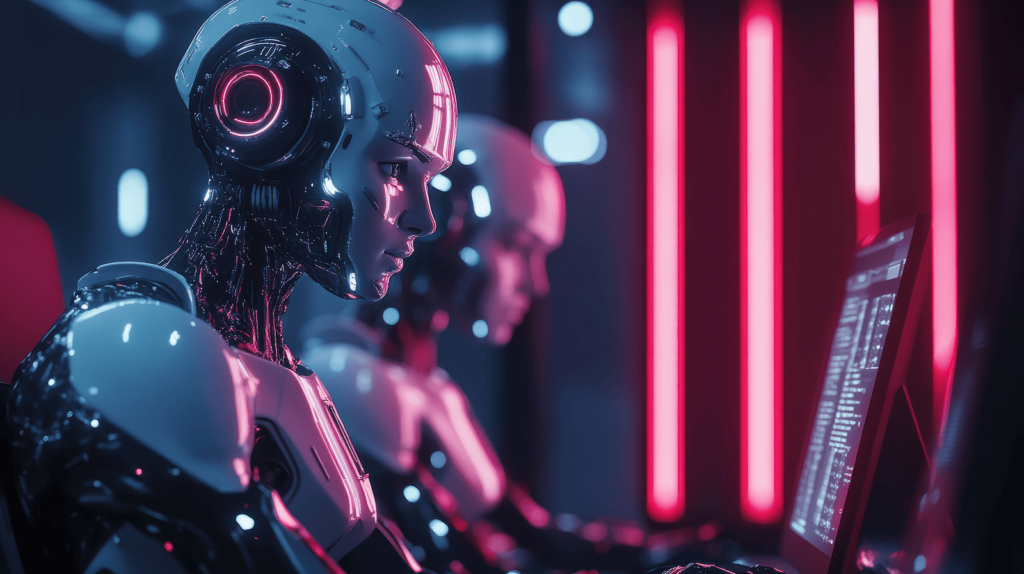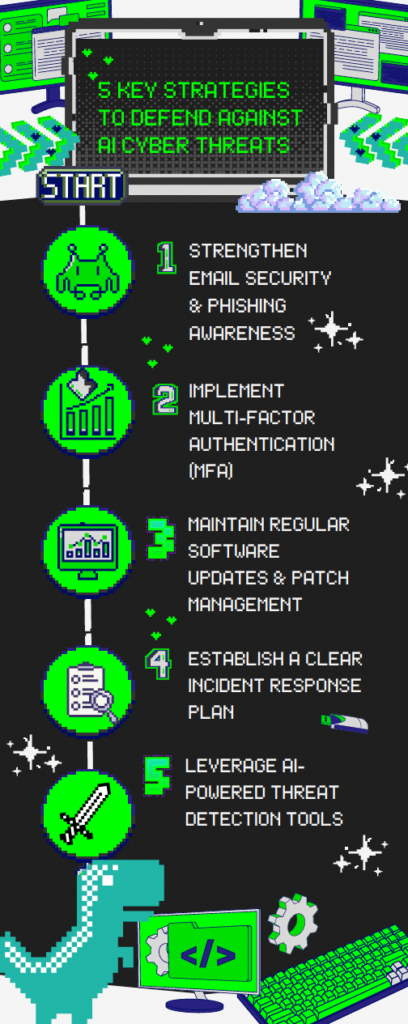Mastering AI: 5 Essential Strategies to Combat AI Cyber Threats

Artificial intelligence (AI) and machine learning (ML) have made a huge impact on our world, transforming the cybersecurity space, creating opportunities for both defenders and attackers. The global AI market is worth about $279 billion, increasing around $80 billion since 2023! Cyber criminals now leverage AI to automate cyber attacks, evade detection, and even adapt in real time to the defenses they encounter. With AI cyber threats on the rise, it’s important to understand these new cyber security risks, and how security teams can create a strong security posture against them.
In this article, we’ll share three AI threats expected to be prominent in 2025 and five strategies for defending against them.
The evolving landscape of AI-driven threats

As AI systems continue to evolve, so do the methods attackers use to exploit vulnerabilities. According to a recent Gartner survey, AI-driven threats are expected to dominate the cybersecurity landscape in 2025. Here are some of the AI-powered threats expected to dominate cyber security in 2025:
1. Automated phishing and social engineering AI algorithms
AI can generate highly targeted, convincing phishing attacks and social engineering techniques at scale. By analyzing publicly available sensitive data and social media, threat actors can craft emails that are increasingly difficult for employees to identify as fake.
2. Adaptive malware
Some malware attacks use AI models to detect when they’re being analyzed or contained. This “smart” malware can alter its behavior to evade detection, making it particularly challenging for traditional intrusion detection systems.
3. Credential stuffing and brute force attacks
Automated scripts driven by AI-enabled tools can test millions of username and password combinations rapidly, enabling attackers to gain unauthorized access more efficiently than manual methods.

Why AI threats are a major concern for 2025
For organizations, the question isn’t if these potential threats will impact them but rather how they can proactively prepare for and counter them. Security concerns are growing as AI enables more advanced attacks, making risk management crucial.
Key strategies for defending against AI-driven threats

To effectively counter these sophisticated attacks, organizations should adopt a layered, proactive approach to cybersecurity. You’ll find that practicing most of the same fundamentals supporting good security hygiene will either prevent or mitigate the impact that AI-Driven Threats present. Below are key strategies that can strengthen defenses against evolving threats without requiring extensive in-house expertise.
1. Strengthen email security and phishing awareness
AI-driven phishing and social engineering attacks are increasingly sophisticated, often bypassing basic email security filters. Investing in advanced AI-powered tools for email security that use AI to identify patterns that are unusual can help prevent many attacks. Additionally, regular employee training on social engineering techniques is crucial. Cybersecurity awareness programs and simulated phishing exercises will help staff identify suspicious emails, reducing the risk of human error.
2. Implement Multi-Factor Authentication (MFA)
With AI-powered credential stuffing attacks on the rise, passwords alone are no longer sufficient. MFA adds a critical layer of protection, requiring users to verify their identity through a second method. This significantly reduces the risk of unauthorized access, even if attackers obtain user credentials. MFA solutions are increasingly affordable and effective, making them a smart investment for businesses of any size. Check out Gartner’s Best User Authentication Reviews 2024 here.
3. Maintain regular software updates and patch management
AI-driven malware often exploits known vulnerabilities in outdated software. Regularly updating and patching systems reduces the number of exploitable weaknesses, even for more sophisticated malware. Organizations can use patch management tools to streamline this process, ensuring that all devices are up-to-date and protected against the latest threats. Choose the right Patch Management Software using real-time, up-to-date product reviews here.
4. Establish a clear Incident Response plan
With the speed of AI-driven attacks, responding quickly and effectively to incidents is critical. This incident response plan (IRP) will outline the steps to take when a breach occurs, ensuring a swift and organized response. Testing this plan regularly with tabletop exercises will ensure your team is ready for any scenario, minimizing downtime and damage.
5. Leverage AI-powered threat detection tools
AI tools aren’t only for attackers; they’re a powerful tool for defenders, too. Solutions that use AI to analyze network behavior and detect anomalies can provide an early warning system for attacks. Organizations should consider adopting Managed Detection and Response (MDR) services or Endpoint Detection and Response (EDR) solutions that use AI to mine network traffic and identify threats in real-time, enabling rapid response to potential incidents.
Looking ahead: Preparing your business for 2025 and beyond
The rapid evolution of AI-powered cyberattacks requires organizations to stay agile and proactive in their cybersecurity efforts. But, with the right strategies and tools businesses can empower themselves to defend their sensitive data effectively, no matter how daunting the nature of these threats may seem. Therefore, adopting a layered security approach, leveraging AI-powered tools for defense, training data, and prioritizing employee awareness, businesses can not only prepare for 2025 but build resilience for years to come.
Don’t let AI-driven threats catch you off guard – Start your defense plan today

The rapid development of artificial intelligence tools and AI models has introduced significant advancements, but also dangerous capabilities that organizations must be prepared to face. Which means, keeping up with the evolving abilities of artificial intelligence and the associated risks can be challenging; especially if you’re considering protecting against AI with AI. So, if you’re looking for a team to support your organization’s cybersecurity posture against AI-powered cyberattacks, Cyber Defense Group can help.
Cyber Defense Group offers comprehensive support to strengthen your organization’s cybersecurity posture against AI-driven threats. With a combination of strategic consulting and cutting-edge technology, we deliver reliable protection and business resilience at a predictable cost. Our team of experienced cybersecurity professionals is equipped to help defend against malicious actors and safeguard your operations.

